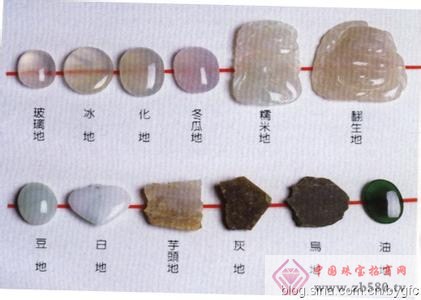What are the identification methods of jadeite?

Jade, there are two types of jadeite and nephrite. Jadeite has different colors due to different metal elements. Therefore, it has different colors, such as chromium-based green (green), and iron-based red. Color), other colors such as purple, orange, yellow, white, black. The color of nephrite is not as diverse as jadeite, only white (shallow), dark green, dark green, and ink. The nephrite ribbon has an oily luster that is different from the glass luster of jadeite.
The history of human wearing nephrite is longer than that of jadeite. As early as 2,000 years ago, the Chinese had mined nephrite and carved it into ornaments. Jadeite was not introduced to China until the 18th century. But with its fascinating bright colors, it quickly replaced the nephrite market. At present, nephrite has become a treasure of many antique lovers and jade collectors, and it is expensive; jadeite is the jade jewelry seen on the market, and the price is much cheaper than nephrite.
The simple way to distinguish the quality of jadeite is:
One is to look at the color. Color is the most important factor in assessing the quality of jadeite. The jadeite without color is just a stone. The jadeite with uniform color, yang, thick and positive is the top grade. "Flat" means uniform; "Yang" means bright color, giving people a sense of openness and no stagnation; "Concent" means darker colors; "Positive" means no other mixed colors.
The second is to look at the texture. Jadeite is a polycrystalline mineral formed by silicate at high temperature and high pressure. The size of its crystals directly affects the smoothness, transparency and hue after honing. Therefore, the finer the polycrystalline structure, the better the texture of the jadeite.
The third is to look at transparency. Transparency is a physical phenomenon that complements texture. The finer the texture, the higher the transparency. If jadeite is as transparent as glass, the fineness of the crystal inside it will make the light straight through without being blocked.
The fourth is to look at the day after processing. Jadeite is mined just like ore. It must be carefully crafted by experienced professional craftsmen to cut the colored parts of the stone into different ornament shapes, then be polished and carved, polished and waxed before they can be sold on the market. The “A†grade is the highest in the processing without any bleaching and fading or dyeing treatment; the “B†grade is bleached and faded, and the value is second; the dyed “C†grade is lower. Excellent after-day processing can make the hard jade icing on the cake and the value doubles.
Five look at the crack. Cracks on jadeite may be caused during mining or during processing. With cracks, no matter how good the color, texture and transparency, it will affect the value. Sometimes the crack is not obvious on its surface, but it can be seen by careful observation in the sun. Especially for jadeite which is bleached or faded or dyed, cracks are common.
While discerning the quality of jadeite, it is also necessary to prevent artificial jade from being fake. Artificial imitation jade is made by dyeing with glass, plastic and other materials. Most of the glass artificial imitation jade contains bubbles, the color is bright and the green color has a strong light, and the color is different from the real jade. The plastic artificial imitation jade is lighter than the real jade, the transparency is very poor, the color is dull, and it is far from the real jade.
After mastering the above brief identification method, you can basically find the level of jadeite.
Remote Electric Roller Curtain
Remote Control Curtain, Electric Roller Blinds, Electric Curtain Blackout For Room
SHAOXING XIANHENG INTERNATIONAL LTD. , https://www.sxcurtain.com